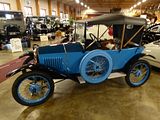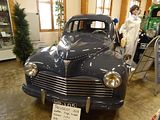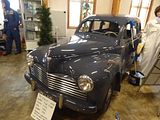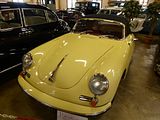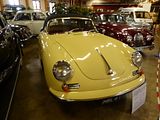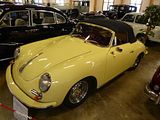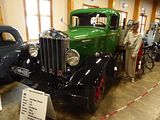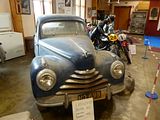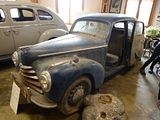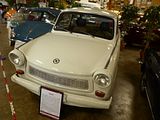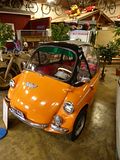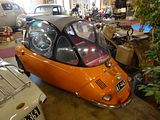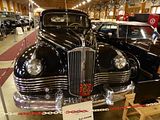I last visited Finland before the turn of the century, in the days when effectively there was no internet, so my trip there had been booked through a specialist travel company who provided a series of hotels and a recommended driving route to connect them up. I mostly did the obvious tourist destinations that were close enough to this route finding one or two surprise points of interest en route, among which was a rather good car museum. When planning this late summer 2022 trip, I vowed to go back, but now blessed with an internet which allows you to find out so much more about a place you are visiting, I discovered that there are in fact around 20 car museums in Finland. They are spread over a wide area in what is quite a big country, and the fact that late September is deemed out of season meant that some of them were not going to be open, but careful research to see where they all were elicited some I could easily reach from my Helsinki base and this is one of them, the Vehoniemi Automuseo. The address says that it is in Kangasa, but in fact it would be more accurate to describe as in the middle of nowhere. When the navigation system in the rental car took me up a narrow road in the forest. I needed the courage of my convictions to be believe this was correct, but it turned out that it was. About 1km from the main road, there, on the right hand side of the road was a moderately sized building which houses both a cafe and a car museum.
The Vehoniemi Auto Museum was opened to the public in the spring of 1983. The museum was founded by textile workers Lilja and Olavi Sallinen, whose entire family has been fond of old vehicles since the 1950s. Olav’s first hobby car was an American Rugby Touring from 1924. The family has actively participated in local and national vehicle hobby association activities and its development. As the collection grew, the dream of its own car museum was born, for which a place was found in Kangasa in the middle of the Vehoniemenharju nature reserve, which has been a well-known car tourist destination since the 1920s. In addition to the collections of the museum and the Sallinen family, the car museum exhibits vehicles owned by individual enthusiasts from different parts of Finland, as well as vehicles from associations, foreign collections and museums. The exhibition is constantly changing. During the summer season, individual vehicles are randomly changed every few weeks. The museum’s exhibitions are sometimes structured around themes, such as in 2019 “Japanese cars and motorcycles in Finland”, but at other times, such as on the occasions of my visit, there is a more diverse exhibition with a wide variety of different types of vehicles of all ages. Here is what I saw in late September 2022:
1922 Benz Gaggenau Fire Truck
1955 BMW 501: The BMW 501 was a luxury car manufactured from 1952 to 1958. Introduced at the first Frankfurt Motor Show in 1951, the 501 was the first BMW model to be manufactured and sold after the Second World War, and as the first BMW car built in Bavaria. The 501 and its derivatives, including the V8 powered BMW 502, were nicknamed “Baroque Angels” by the German public. The BMW 502 was the first postwar German car to be manufactured with a V8 engine. The 501 made an impression on the public with its solid engineering and its extravagance. Its list price of more than fifteen thousand Deutsche Mark was about four times the average yearly salary in Germany at the time. Development issues delayed the start of production until late 1952, and even then BMW still did not have equipment for pressing body panels in operation. The first 2,045 four-door saloon bodies were built by Karosserie Baur and were shipped from Baur in Stuttgart to BMW’s factory in Munich for assembly. The thousandth 501 was completed on 1 September 1953. Coupe and convertible versions were available as custom orders from Baur or Autenrieth. While the 501 and 502 model numbers were discontinued in 1958, variations of the model, with the same platform and body, were continued until 1963.
1928 Chevrolet Capitol Truck: The Chevrolet Series AA Capitol is an American vehicle manufactured by Chevrolet in 1927. Launched in the year Ford changed from the Model T to the Model A, Chevrolet sold 1,001,820 Series AA cars, and under the direction of General Manager William S. Knudsen Chevrolet would overtake Ford’s dominance in the market internationally. The GM introduction of the GM A platform also introduced yearly appearance changes while using a corporate appearance from the newly established Art and Color Section headed up by Harley Earl which meant the Chevrolet Capitol and the Cadillac Series 314 shared a common appearance as both cars, as well as Oakland, Oldsmobile and Buick used Fisher Body, now owned by GM, as the sole provider of coachwork. Individuality between the brands was defined by the manufacturer of the engine, which was brand exclusive, and badging on the radiator. This model documents that the accelerator pedal was introduced as previous generations used a throttle installed in the center of the steering column along with the installation of a gas gauge installed in the dashboard and a centrally installed rear view mirror. Available in eight body styles, the bodywork was very similar to the 1926 Chevrolet Superior Series V and 1925′s Superior Series K. The chassis and platform were also used to build Chevrolet and GMC trucks. In May of 1925 the Chevrolet Export Boxing plant at Bloomfield, New Jersey was repurposed from a previous owner where Knock-down kits for Chevrolet, Oakland, Oldsmobile, Buick and Cadillac passenger cars, and both Chevrolet and G. M. C. truck parts are crated and shipped by railroad to the docks at Weehawken, New Jersey for overseas GM assembly factories.
1975 Chrysler New Yorker Brougham Hardtop: In 1974 rounded “Fuselage Styling” gave way to an even more massive slab-sided effect on all full-size Chryslers. This generation utilized popular styling motifs, primarily used on the Lincoln Continental. These 1974 models happened to debut at almost precisely the same time that the 1973 OPEC oil embargo began, and were a significant part of Chrysler’s economic woes in the late 1970s. The 1974 models were the last full-size models Chrysler designed from the ground up. Two New Yorker trim levels were offered in 1974, the base New Yorker and an upgraded New Yorker Brougham. The listed retail price for the four-door hardtop sedan was US$6,611 and 13,165 were sold, while the St. Regis appearance option package returned from the mid 1950s and was added mid-year offering fixed formal opera windows, body paint accent stripes and a forward half-covered vinyl covered roof. For 1975, the New Yorker received a slightly revised grille, and New Yorker Brougham became the sole trim designation. The St. Regis package, introduced in mid-1974, returned for its first full year. In 1976, the New Yorker inherited the front and rear-end styling of the discontinued Imperial, especially the covered headlights. The Imperial styling gave the New Yorker an unforeseen boost in sales, as the car looked distinctly different from the lower-priced Newport. The styling cues formerly used on the 1974 and 1975 New Yorkers, in turn, were passed on to the base Chrysler Newport. The 1976 New Yorker also inherited the Imperial’s interior styling. In 1977, the standard 440-cid V8 engine was revised to include a new computer-controlled “lean burn” system, thereby allowing for more responsive acceleration and performance. The 1978 New Yorker Brougham was available in 2-door and 4-door hardtop body styles. Both were the last U.S.-built true pillarless hardtop models with frameless door glass and fully opening windows. An optional “St. Regis” package included a partial “formal” padded vinyl roof that included a fixed B-pillar and opera window. This was also the final year a 2-door New Yorker was offered. Appearance changes were limited to a new segmented grill design, dual accent tape strips on the lower body sides, new rear deck stripes, and bright accents on the taillamps.] The 400 cu in (6.6 L) V8 engine (360 cu in (5.9 L) in California and high altitude regions) became the standard engine, with the 440 cu in (7.2 L) optional. The last year of the C-body New Yorker Broughams saw engineering changes that included a revised windshield wiper linkage bushing, redesigned front and rear plastic fender extensions for the bumpers, and thinner glass. A new model debuted for 1979.
1972 Citroen D Super: It is hard to imagine just how revolutionary this car must have seemed when it was unveiled at the Paris Show in 1955. 18 years in secret development as the successor to the Traction Avant, the DS 19 stole the show, and within 15 minutes of opening, 743 orders were taken. By the end of the first day, that number had risen to 12,000. Contemporary journalists said the DS pushed the envelope in the ride vs. handling compromise possible in a motor vehicle. To a France still deep in reconstruction after the devastation of World War II, and also building its identity in the post-colonial world, the DS was a symbol of French ingenuity. It also posited the nation’s relevance in the Space Age, during the global race for technology of the Cold War. Structuralist philosopher Roland Barthes, in an essay about the car, said that it looked as if it had “fallen from the sky”. An American advertisement summarised this selling point: “It takes a special person to drive a special car”. Because they were owned by the technologically aggressive tyre manufacturer Michelin, Citroën had designed their cars around the technically superior radial tyre since 1948, and the DS was no exception. The car featured a novel hydropneumatic suspension including an automatic levelling system and variable ground clearance, developed in-house by Paul Magès. This suspension allowed the DS to travel quickly on the poor road surfaces common in France. In addition, the vehicle had power steering and a semi-automatic transmission (the transmission required no clutch pedal, but gears still had to be shifted by hand though the shift lever controlled a powered hydraulic shift mechanism in place of a mechanical linkage, and a fibreglass roof which lowered the centre of gravity and so reduced weight transfer. Inboard front brakes (as well as independent suspension) reduced unsprung weight. Different front and rear track widths and tyre sizes reduced the unequal tyre loading, which is well known to promote understeer, typical of front-engined and front-wheel drive cars. As with all French cars, the DS design was affected by the tax horsepower system, which effectively mandated very small engines. Unlike the Traction Avant predecessor, there was no top-of-range model with a powerful six-cylinder engine. Citroën had planned an air-cooled flat-6 engine for the car, but did not have the funds to put the prototype engine into production. The 1955 DS19 was 65% more expensive than the car it replaced, the Citroën Traction Avant. This did impact potential sales in a country still recovering economically from World War II, so a cheaper submodel, the Citroën ID, was introduced in 1957. The ID shared the DS’s body but was less powerful and luxurious. Although it shared the engine capacity of the DS engine (at this stage 1,911 cc), the ID provided a maximum power output of only 69 hp compared to the 75 hp claimed for the DS19. Power outputs were further differentiated in 1961 when the DS19 acquired a Weber-32 twin bodied carburettor, and the increasing availability of higher octane fuel enabled the manufacturer to increase the compression ratio from 7.5:1 to 8.5:1. A new DS19 now came with a promised 83 hp of power. The ID19 was also more traditional mechanically: it had no power steering and had conventional transmission and clutch instead of the DS’s hydraulically controlled set-up. Initially the basic ID19 was sold on the French market with a price saving of more than 25% against the DS, although the differential was reduced at the end of 1961 when the manufacturer quietly withdrew the entry level ID19 “Normale” from sale. An estate version was introduced in 1958. It was known by various names in different markets: Break in France, Safari and Estate in the UK, Wagon in the US, and Citroën Australia used the terms Safari and Station-Wagon. It had a steel roof to support the standard roof rack. ‘Familiales’ had a rear seat mounted further back in the cabin, with three folding seats between the front and rear squabs. The standard Break had two side-facing seats in the main load area at the back. During the 20 year production life, improvements were made on an ongoing basis. In September 1962, the DS was restyled with a more aerodynamically efficient nose, better ventilation and other improvements. It retained the open two headlamp appearance, but was available with an optional set of driving lights mounted on the front bumpers. A more luxurious Pallas trim came in for 1965 Named after the Greek goddess Pallas, this included comfort features such as better noise insulation, a more luxurious (and optional leather) upholstery and external trim embellishments. The cars were complex, and not always totally reliable, One of the issues that emerged during long term use was addressed with a change which came in for 1967. The original hydropneumatic system used a vegetable oil liquide hydraulique végétal (LHV), similar to that used in other cars at the time, but later switched to a synthetic fluid liquide hydraulique synthétique (LHS). Both of these had the disadvantage that they are hygroscopic, as is the case with most brake fluids. Disuse allows water to enter the hydraulic components causing deterioration and expensive maintenance work. The difficulty with hygroscopic hydraulic fluid was exacerbated in the DS/ID due to the extreme rise and fall in the fluid level in the reservoir, which went from nearly full to nearly empty when the suspension extended to maximum height and the six accumulators in the system filled with fluid. With every “inhalation” of fresh moisture- (and dust-) laden air, the fluid absorbed more water. For the 1967 model year, Citroën introduced a new mineral oil-based fluid liquide hydraulique minéral (LHM). This fluid was much less harsh on the system. LHM remained in use within Citroën until the Xantia was discontinued in 2001. LHM required completely different materials for the seals. Using either fluid in the incorrect system would completely destroy the hydraulic seals very quickly. To help avoid this problem, Citroën added a bright green dye to the LHM fluid and also painted all hydraulic elements bright green. The former LHS parts were painted black. All models, including the Safari and ID, were upgraded at the same time. The hydraulic fluid changed to the technically superior LHM (Liquide Hydraulique Minéral) in all markets except the US and Canada, where the change did not take place until January 1969, due to local regulations. Rarest and most collectable of all DS variants, a convertible was offered from 1958 until 1973. The Cabriolet d’Usine (factory convertible) were built by French carrossier Henri Chapron, for the Citroën dealer network. It was an expensive car, so only 1,365 were sold. These DS convertibles used a special frame which was reinforced on the side-members and rear suspension swingarm bearing box, similar to, but not identical to the Break/Safari frame. The cars here included a nice DS23EFi, the top model in the range, which came with a fuel injected 2.3 litre engine, five speed gearbox as well as those iconic swivelling headlights which turned with the steering wheel.
1991 Elcat City Van: Elcat was a battery electric vehicle manufacturer and an electric vehicle importer based in Järvenpää, Finland. Elcat Automotive was owned by an electricity producer called Fortum until the production decreases in the early 21st century. Elcat began working in 1974 to design electric cars for Nordic climate. The first prototypes for Elcat’s automotive industry were made in 1985 with a joint venture plan with Subaru’s Sambar, Dias, and Domingo vans, while the first commercial product was released in 1990. The users of Elcat vehicles were Finnish post office (Posti) and Stockholm-based delivery service. Elcat ceased car production in 2002 and pivoted to importing electric vehicles. The company imported and sold electric quadricycles, golf carts, and maintenance vehicles as well as electric mopeds and bicycles. Elcat went bankrupt in 2017.
1965 Fiat 1500 Coupe: The Fiat 1300 and Fiat 1500 are a series of front-engine, rear-drive automobiles manufactured and marketed by Fiat from 1961 to 1967, replacing the Fiat 1400 and Fiat 1200 coupé, spyder and cabriolet. The 1300 and 1500 were essentially identical to each other except for their engine displacement, as indicated by their model names, and were offered in sedan/saloon, station wagon, convertible and coupé body styles which shared little mechanically with the other body styles except the 1500 engine. The 1500 offered a 75 hp engine, lightweight construction, front disc brakes and rear alloy drum brakes. The 1300/1500 and their derivatives were also assembled by Yugoslavia’s Zastava and Fiat’s German subsidiary, Neckar Automobil AG, as well as in South Africa. The floorpan of the 1500 C was used as a basis for the 1500s replacement, the Fiat 125, while another model, the Polski Fiat 125p, made by the Polish FSO, was created by mating the body of 125 and mechanicals (engines, gearbox, transmission, suspension) of 1300/1500. In the Italian range, the 1300 was replaced by the Fiat 124 in 1966, and the 1500 by the Fiat 125 a year later. In total, 1,900,000 units were produced worldwide
1919 Ford Model T Runabout: The Ford Model T was produced by the Ford Motor Company from October 1, 1908, to May 26, 1927. It is generally regarded as the first affordable automobile, which made car travel available to middle-class Americans. The relatively low price was partly the result of Ford’s efficient fabrication, including assembly line production instead of individual handcrafting. It was mainly designed by an American (Childe Harold Wills) and two Hungarian engineers (Joseph A. Galamb, Eugene Farkas). The Model T was colloquially known as the “Tin Lizzie”, “Leaping Lena” or “flivver”. The Ford Model T was named the most influential car of the 20th century in the 1999 Car of the Century competition, ahead of the BMC Mini, Citroën DS, and Volkswagen Beetle. Ford’s Model T was successful not only because it provided inexpensive transportation on a massive scale, but also because the car signified innovation for the rising middle class and became a powerful symbol of the United States’ age of modernization. With 15 million sold, it was the most sold car in history before being surpassed by the Volkswagen Beetle in 1972, and still stood eighth on the top-ten list, as of 2012.
1939 Ford DeLuxe Fordor: Ford Motor Company introduced its De Luxe Ford line in 1938 as an upscale alternative to bridge the gap between its base model (usually called Standard) and luxury Lincoln offerings. The “Deluxe” name was first used starting in 1930 to specify an upscale trim starting with the Model 40-B and Model 45-B, then later the De Luxe Ford line was differentiated as a separate “marque within a marque” with separate styling and pricing through 1940. During 1939, Ford had five lines of cars: Ford, De Luxe Ford, Mercury, Lincoln-Zephyr, and Lincoln. After the war, this was simplified to Ford, Mercury, and Lincoln. The 1941 Ford line included “De Luxe” and “Super De Luxe” trim, but these vehicles were not marketed as a separate line. As Mercury Eight sales progressed, the De Luxe approach was cancelled.
This marketing approach was in response from the different General Motors brands, (Cadillac, Buick, Oldsmobile, Pontiac, and Chevrolet), and the Chrysler brands, (Chrysler, DeSoto, Dodge, and Plymouth). The De Luxe Fords of 1938 featured a more sloping hood and ornamental heart-shaped grille. This look was passed on to the standard line for 1939, as the De Luxe Fords gained sharp v-shaped grilles with vertical bars. The standard line once again inherited the De Luxe look for 1940, this time with body-coloured vertical bars. The 1940 De Luxe Ford featured a three-part grille with horizontal bars.
1956 Fuldamobil Cabrio: Fuldamobil is the name of a series of small cars produced by Elektromaschinenbau Fulda GmbH of Fulda, Germany, and Nordwestdeutscher Fahrzeugbau (NWF) of Wilhelmshaven between 1950 and 1969. Various designated versions of the car were produced, although the vehicles produced under each designation were not always identical and the designations were sometimes misapplied. Though overall numbers produced were relatively small, the cars attracted sufficient attention to see licensed construction on four continents including Europe. In its ultimate configuration it is said to have inspired the term “bubble car”.[a] It is acknowledged as the first car in the world to feature a negative scrub radius, now recognised as a major advance in driving safety. The car’s original design was conceived by Norbert Stevenson, a freelance journalist who had worked for the Rhein-Zeitung newspaper. As with many others involved in the field of automotive design, Stevenson had little in the way of formal qualifications in this area, although he had completed one term of mechanical engineering at the Technische Hochschule Berlin. His design concept was for a very simple three-wheeled car with room for two people inside, it would have two wheels at the front for stability, and be driven by a small engine at the rear. Initial work on the project was carried out with funding from Peter Stein, the publisher of the Rhein-Zeitung, using a 350cc Horex Columbus engine and other proprietary components, but economic conditions at the time proved unworkable. The project was aborted and all the parts resold. Stevenson then approached several companies with his concept and in the summer of 1949, found backing from Karl Schmitt, a wealthy engineering graduate. Schmitt was a Bosch wholesaler in the town of Fulda, Germany, who also ran another small company; Elektromaschinenbau Fulda GmbH, which had proved successful providing maintenance and repair of the emergency power generators in widespread use in Germany after the war. By October 1949, a new chassis had been started. A notable aspect of the front axle design was the incorporation of a negative scrub radius. Now recognised as a major advance in driving safety, this provides an inherent stabilising effect on slippery road surfaces or when brakes are applied unevenly to wheels on either side of the car. Although now a feature on the majority of front wheel drive cars and about a third of all rear wheel drive cars, the Fuldamobil is credited with being the first car in the world to feature this innovation. The steel, central tube frame chassis was fitted with swing axle suspension on the front wheels and had the rear wheel mounted in a swinging arm. Braking was only provided on the front wheels, and was operated by cable. For cost reasons, shock absorbers were omitted, which did mean that with the body fitted, the prototype would wallow about like a ship at sea.[b] The prototype was fitted with a 198cc air-cooled Zündapp motorcycle engine.A conflicting report on the prototype in Das Auto states that it had an air-cooled single-cylinder two-stroke 250cc ILO engine. The black and white painted coupé bodywork was slab-sided, streamlined, but heavy. It had a fabric roof, which could be rolled back for ventilation, a split windscreen and two side doors[9] fitted with opening windows. Access for the driver and passenger via these rear-hinged doors was restricted, with the front wheel arch filling half the door width. The bodywork was constructed in eight days by the Leibold company in Fulda, and was based around caravan construction techniques, with metal sheet panels nailed to a wooden frame. Behind the doors on either side, were large, letterbox-shaped air ducts to provide cooling air to the engine. The end of the exhaust pipe emerged from a small circular hole near the tail. Nicknamed “Flea”, the prototype car made its official – if somewhat inauspicious – debut in the Rosenmontag carnival procession in Fulda, in March 1950. With the air-cooled engine, heavy body and slow, walking pace of the procession, it was perhaps inevitable that the car would succumb to heat failure en route, nevertheless, it was greeted enthusiastically by the press. The car was scrapped after 3000 km of testing. The search for a more suitable engine got off to a bad start, with a disparaging response from Triumph-Werke in Nuremberg. Stevenson found a more willing supplier at the small Baker & Pölling works in Niedernhall. The company made one and two-man chainsaws, and were willing to adapt their existing compact 200cc engine to suit the car. The engine was already fan-cooled, and Baker & Pölling increased the capacity to nearly 250cc. The Fulda factory attached a Hurth 3-speed gearbox with reverse, driven by a primary chain and added an electric starter to the engine. A second prototype using a 200cc Baker & Pölling engine and fitted with a roadster type body, was built around Christmas 1950. It was sold almost immediately. Series production began in February 1951. The car underwent significant development, modification and changes in appearance throughout its production life, but generally was only referred to in advertising and contemporary publications as either the Fulda–Mobil or the Fuldamobil, without a specific designated model number or suffix. The principal exception was during the period 1953–1955 when the slab-sided version of the car — referred to as the Type N, and the more rounded version Type S — were manufactured and included simultaneously in company brochures. Internal production records and some individual vehicle registration documents have been adopted subsequently and are now used by most modern reference works to allocate more specific model designations, but should not be seen as definitive.
1956 Fuldamobil S4: Whilst NWF struggled to sell and distribute the 200cc cars that it produced, the factory at Fulda appears to have continued in much the same way as it did before, Type N production giving way to Type S around September 1954 with all the Fulda produced Type S cars fitted with the 360cc Sachs engine. After unsuccessful experiments with Adler & Lloyd engines, the 200cc Sachs engine was adopted probably in the early part of 1955 and very soon afterwards series production of the 360cc version likely ceased. With the addition of some NWF cars being sent back to the Fulda factory in lieu of licensing fees, there is some ambiguity about production dates during 1955 and Auto motor und sport show four different versions (N 200 – 2200 DM, N 360 – 2200 DM, S 200 – 2780 DM and S 360 – 2990 DM) simultaneously on their list of car prices for February and June that year. In September 1955 this ambiguity ends and is replaced by one model, The Fuldamobil S4. The most significant change with this development was the fitment of two rear wheels. Fitted without any differential and with a very narrow track between, they provided a significant improvement to the handling, and the body was made slightly longer to accommodate them. Other changes were a larger rear window in the tailgate, the enclosure of the final drive chain in an oil bath, decorative trim strips on the centre of the nose and along the sides of the car and the repositioning of the windscreen wipers above the windscreen rather than below. Factory advertising includes the S4 suffix and shows the car fitted with the optional sun roof. Three-wheeled versions are said to have been available on request, to continue to take advantage of lower tax rates for three-wheelers, but this accommodation became redundant in Germany in May 1956, when the law was changed so that vehicles with two adjacent rear wheels less than a tyre width apart, were given the same tax advantage as three-wheelers. In 1956, a roadster version of the aluminium-bodied Type S was built and this was subsequently given the model number S5. It was said to be available to order, although only one example is believed to have been built. Towards the end of 1955, a contract for licensed production was signed between Karl Schmitt and Fritz Neumeyer, the head of Zündapp. Although it was expected that modifications to the car would be made at Zündapp, including the fitment of their own engines, some preliminary changes were also made to the car at Fulda. The chassis was redesigned with the front suspension simplified to cut costs, although this also meant the loss of its negative scrub radius and the rear hatch was replaced by a larger fixed window. Two sample cars were sent to Zündapp for detailed examination, but the Zündapp project was cancelled early in 1956. Production of the cars at Fulda remained more of a hobby than a business, with the few cars built each month being sold before they were finished to a loyal band of customers. When a magazine took a photograph of the roadster in 1957, Schmitt’s response was that they shouldn’t publish it, otherwise people might order that version too. The modifications made to the Fuldamobil for Zündapp were retained for production cars and the revised car was presented to the public at the IFMA show in October 1956 where two-tone paintwork was also offered for the first time. This version has subsequently been referred to as the S-6
1962 Jaguar Mark 2 3.8: One of the most loved Jaguars of all time, both when it was new, and still now, is the Mark 2 saloon. Many will tell you that it is not the 3 Series BMW that “invented” the “compact sports saloon” car class, but this model, which dates back to 1959. A thorough revision of the small Jaguar saloon that had joined the range in 1955, the Mark 2 was notable in that it was the first car to use the Arabic numeral in its name, as opposed to the Roman numerals of the larger Jaguar models. At launch, the earlier model which had hitherto been known by its engine size was christened the Mark 1. Although clearly based on that car, the updated car looked significantly different, with an increase of 18% in cabin glass area greatly improving visibility. The car was re-engineered above the waistline. Slender front pillars allowed a wider windscreen and the rear window almost wrapped around to the enlarged side windows now with the familiar Jaguar D-shape above the back door and fully chromed frames for all the side windows. The radiator grille was amended and larger side, tail and fog lamps repositioned. Inside a new heating system was fitted and ducted to the rear compartment (although still notoriously ineffective). There was an improved instrument layout that became standard for all Jaguar cars until the XJ Series II of 1973. As well as the familiar 2.4 and 3.4 litre engines, what made this car particularly special was that it was also offered with the potent 220 bhp 3.8 litre unit that was fitted to the XK150 and which would later see service in the E Type. This gave the car a 0 – 60 time of around 8.5 seconds and a top speed of 125 mph. No wonder that the Mark 2 became popular as a get-away car for the criminal fraternity, and to keep up with and catch them, many police forces bought the car as well. With revised suspension and standard four wheel disc brakes, the car was effective on the track, taking plenty of class wins when new, and it is still popular in historic racing circles today. The quickest and most successful private entries came from John Coombs, a man with significant race experience who operated a large Jaguar dealership in Guildford. Coombs would undertake modifications to meet the demands of his customers, so not all the cars that he worked on are the same. Jaguar replaced the Mark 2 with simplified and slightly more cheaply finished 240 and 340 models, as an interim measure until an all-new model was ready to take over from them. The 3.8 litre disappeared from the range at this time, but in the 7 years it had been in production, it had been the best seller of the range, with around 30,000 cars produced, as compared to 28,666 of the 3.4 litre and 25,741 of the 2.4 litre model.
1930 Marmon Big Eight Limousine: Marmon’s parent company was founded in 1851, manufacturing flour grinding mill equipment and branching out into other machinery through the late 19th century. Small limited production of experimental automobiles began in 1902, with an air-cooled V-twin engine. An air-cooled V4 followed the next year, with pioneering V6 and V8 engines tried over the next few years, before more conventional straight engine designs were settled upon. Marmons soon gained a reputation as reliable, speedy upscale cars.
1956 Messerschmitt KR200: The Messerschmitt KR200, or Kabinenroller (Cabin Scooter), is a three-wheeled bubble car designed by the aircraft engineer Fritz Fend and produced in the factory of the German aircraft manufacturer Messerschmitt from 1955 until 1964. Messerschmitt, temporarily not allowed to manufacture aircraft, had turned its resources to making other products. In 1952, Fend approached Messerschmitt with the idea of manufacturing small motor vehicles. These were based on his Fend Flitzer invalid carriage. The first of Fend’s vehicles to enter production at Messerschmitt’s Regensburg factory was the KR175. The title Kabinenroller means “scooter with cabin”. While the Messerschmitt name and insignia were used on the car, a separate company, incorporated as Regensburger Stahl- und Metallbau GmbH, was created to manufacture and market the vehicle. The KR200 replaced the KR175 in 1955. While using the same basic frame as the KR175 with changes to the bodywork (notably including wheel cutouts in the front fenders) and an improved canopy design, the KR200 was otherwise an almost total redesign. The rear suspension and engine mounting were reworked, and hydraulic shock absorbers were installed at all three wheels. Tire sizes were enlarged to 4.00×8. Retailing for around DM 2,500, the KR200 was considered an instant success with almost 12,000 built during its first year, which was the highest annual production for Kabinenroller models. A maximum speed in excess of 90 km/h (56 mph) despite a claimed power output of only 10 PS, 1 more PS than the 175 cc engine from the KR175, reflected the vehicle’s light weight and low aerodynamic drag. The KR200, however, was 23 kg heavier than the KR175 it replaced but had a 10 km/h (6 mph) higher top speed. An “Export” package included a two-tone paint scheme, painted hubcaps, a fully trimmed interior, a heater, a clock, and a sunshade for the canopy. In 1956, around a year after West Germany joined NATO, Messerschmitt was allowed to manufacture aircraft again and lost interest in Fend’s microcars. Messerschmitt sold the Regensburg works to Fend who, with brake and hub supplier Valentin Knott [de], formed Fahrzeug- und Maschinenbau GmbH Regensburg (FMR) to continue production of the KR200 and his other vehicles. In 1957 the KR201 Roadster was launched and remained in production until 1964 with very limited numbers produced. It had a frameless windscreen with no window frames, an optional folding cloth roof and removable side curtains made from transparent plastic. In February 1958, the KR200 Kabrio Limousine model was released, featuring a cloth convertible top and fixed side window frames. A Sport model was later offered with a cut down plexiglas windscreen with no roof and with fixed side panels so that the driver would have to climb in and out at the top of the car. Production of the Sport was extremely limited and, apart from the KR200 ‘Super’ it is the rarest type of KR200. Production of the KR200 was heavily reduced in 1962 and ceased in 1964 as sales had been dropping for a few years. The demand for basic economical transport in Germany had diminished as the German economy boomed.[14] A similar situation developed in other parts of Europe such as in the manufacturer’s biggest export destination, the United Kingdom, where sales were particularly affected by the increasing popularity of the Mini. A total of 30,286 units of the KR200 were built.
1965 Mini Cooper and 1969 Austin Mini
1964 Opel Olympia Rekord 1700: The Opel Rekord Series A is an executive car introduced in March 1963,as a replacement for the Opel Rekord P2. It was fractionally shorter but also wider than its predecessor with a wheelbase approximately 10 cm longer. The Rekord (Series A) combined a stylish modern body with a range of engines little changed since 1937. In August 1965 it was replaced by the Opel Rekord (Series B) which from the outside was surprisingly similar, but which under the bonnet/hood would introduce a new generation of four-cylinder engines that would power Rekords until 1986, when Rüsselsheim produced its last Opel Rekord. The Rekord A that appeared in March 1963 was a robust response to the success of the Ford Taunus 17M. The design of the new Rekord sedan came not from Germany but from the General Motors Technical Center in Warren, Michigan, and was inspired by the successful Chevrolet II. It was styled to look slimmer and more sporty than its predecessor, but underneath its reassuringly clean design the Rekord A remained faithful to the trusted technical layout of previous models, from which the 1488cc and 1680cc four-cylinder overhead valve engines were taken, albeit now with an enlarged carburettor and claimed maximum power which even on the entry level cars, came in at 55 hp. The original sales material named the car the Opel Rekord P3, which would have been a logical continuation from the previous model, known as the Opel Rekord P2. The decision to stress the newness of the design by calling it the Opel Rekord A was evidently taken very late in the day. Until 1959 previous versions had been badged as Opel Olympia Rekords, and while the Olympia name had now disappeared from the car’s official name, the word “Olympia” was still inscribed across the glove box lid in chrome script. The 1937 Opel Olympia had redefined the Opel range, being one of the first monocoque designs in Europe, and the company had tooled up to produce it in huge numbers. Evidently Opel were keen to keep alive the memory of the first Olympia. The relatively extensive range of body types followed the pattern of the predecessor model. The top seller was the saloon/sedan, available with either 2 or 4 doors. There was a “CarAVan” station wagon, but still only with three doors which was normal in Germany, although by now station wagons of this size produced in France, Italy, England or Sweden almost invariably came with a second set of doors for the passengers in the back. Opel also offered a three-door delivery van which was essentially identical to the station wagon except that the rear side windows were replaced with metal panels. A coupé version was also assembled on the Rüsselsheim production line along with the Sedan and the CarAVan. The design, which heavily penalised rear seat head-room in order to provide a more stylish profile, was the work of Opel’s German development team, working with the already finalised North American design of the sedan. Cabriolet versions were also available. Based on the Rekord A coupé, these were conversions from the body builders Autenreith until they ceased production in 1964, and thereafter by Karl Deutsch. This approach made them much more expensive than the other cars in the range, and the cabriolet conversion was not offered with the smaller 1,488 cc engine. Very few Rekord A cabriolets were sold. Unlike the modern bodywork, the 1,488 cc OHV four-cylinder water-cooled engine was very little changed since it had first been offered in the Opel Olympia back in 1937. Available minimum fuel octanes had been progressively increased since 1945, however, and even the entry level, now with a compression ratio of 7.25:1, now came with a claimed maximum power of 55 hp at 4,500 rpm. A 36 mm diameter carburettor, previously included on the larger four-cylinder engine, was now included across the range. In addition the 1680 cc four-cylinder version of the engine, first offered in the 1959 Rekord P1 was offered as an option now with 60 hp or, in return for a raised 8.0:1 compression ratio, 67 hp on the 1700S version of the engine. Torque was correspondingly increased on the more powerful engines. All the four-cylinder engines retained their side camshafts driving the cylinder valves by a combination of rods and rocker arms. By now the side camshaft four-cylinder engine was viewed as old fashioned, but over the years it had acquired a reputation for reliability. In March 1964 the Rekord A became the first Opel Rekord to be available with a six-cylinder engine. The engine in question was the 2,605 cc unit, shared with the newly introduced 1964 Opels Admiral and Kapitän. On all three applications maximum power output of 100 hp was claimed at this stage. The new six-cylinder powered Opel Rekord L-6 had an advertised top speed between 163 and 168 km/h (101 – 104 mph) making it the first Rekord able to offer a top speed above 100 mph in non-metric markets (chiefly, in this case, the UK and the US). But the car was not an unqualified delight. Fuel efficiency slumped, the car needing 12 litres of “super grade” high octane fuel to cover 100 km. The six-cylinder engine was also heavy: there was no mention of any power-assisted brakes or power-assisted steering option on the Rekord A, the latter feature being reserved for luxury cars such as the Opel Admiral and Kapitän. Neither feature would have been expected at the Rekord’s price level in Europe in the 1960s, but it was nonetheless noted that the Rekord L-6 was heavy to drive in slow urban traffic. The six-cylinder Rekord L-6, along with the Admiral and Kapitän are also noteworthy as the first Opels to come with 12-volt electrical systems. Hitherto Opel customers, like Volkswagen customers and (until 1967) German Ford customers all had to make do with 6-volt electrics. The four-cylinder Rekord A, like its predecessor, came with hydraulically controlled drum brakes all-round. 230 mm drums replaced the standard 200 mm diameter drums for the rear wheels of the CarAVan and panel van vehicles. The six-cylinder Rekord, with its extra weight, came with front disc brakes included in the price, and the larger 230 mm diameter drums from the estate cars at the back. The Rekord A took its three-speed all-synchromesh transmission from its predecessor, but this was now offered only with the 1,488 cc engine. A four-speed all-synchromesh unit was available as an extra on 1,488 cc cars and included in the price where a larger engine was specified. Although most cars continued to be delivered with a column mounted gear change, a floor mounted gear lever positioned between the front seats was also available. The option of an “Olymat” automatic clutch provided by Fichel & Sachs was offered. The system was broadly similar to the Fichel & Sachs “Saxomat” automatic clutch offered at this time by other German automakers. The 2,605 cc engine on the Kapitän and Admiral came with a new automatic gear-box, but no fully automatic transmission was offered with this engine when fitted in the Rekord. Other principal mechanical elements on the Rekord A such as the suspension and steering systems were also lifted largely unchanged from the Rekord P2, and conformed to the norms of the time. At launch the entry level the 1,488 cc two-door Record came with a domestic market manufacturer’s recommended price of DM 6,830. At the other end of the range a factory built Rekord coupé L-6, powered by the six-cylinder 2,605 cc engine borrowed from the Kapitän, could be purchased for DM 9,310. Customers wishing to pay for a coach-builder cabriolet conversion would need to find DM 11,765 for a car with the 1700S (1,680 cc, 89 hp) four-cylinder engine or (from 1964) DM 13,060 for a six-cylinder Rekord cabriolet. The Rekord A was produced at an annual rate slightly ahead of its predecessor. It was a commercial success. It was formally replaced in August 1965 after a 29-month production run during which 887,488 cars had been produced. As before, the nearest competitor in terms of price, size, power and target market came from Ford. The new Ford Taunus 17M was introduced in 1964 and during a three-year production run it would chalk up 710,059 units. The Opel Rekord would never challenge the smaller cheaper Volkswagen Beetle for top slot in the West German sales charts, but the success of the Rekord A and its successors ensured that the Rekord’s market dominance within its own class was never again threatened by Ford Germany or anyone else.
1923 Peugeot 172: Modifications to the Quadrilette in 1923 resulted in the Type 172. launched during the course of 1924. The track was widened so that the two seats could be placed abreast, improving comfort and space. Though the wheelbase was shortened, luggage room was more plentiful because there were no longer two rows of seats. The engine remained the same and weight was kept low. Upgraded versions of the Type 172, such as the Type 172 BC and Type 172 BS also known as the Quadrilette Grand Sport, launched during the course of 1924, had an enlarged 720 cc side-valve engine with slightly more power. Total figures for the Quadrilette amounted to 12,305 over three years, which was 31% of Peugeot’s vehicle production for that time period. Confusingly, models of the Type 172 were attached both to the Quadrilette’s nameplate and to that of its successor, the Peugeot 5CV. The Quadrilette and 5CV were sold side-by-side in 1924, after which Quadrilette production ceased.
1955 Peugeot 203: The Peugeot 203 was the first new design that Peugeot produced after WW2. The car was exhibited at the Paris Motor Show in 1947, but by then had already been under development for more than five years. Volume manufacturing was initially hampered by strikes and shortages of materials, but production got under way late in 1948, with buyers taking delivery of 203s from early 1949. During its twelve-year production run nearly 700,000 203s of all variants rolled off the assembly line in Sochaux, France. Between the demise of the 202 in 1949 and the launch of the 403 in 1955, the 203 was the only model produced by Peugeot. The majority of the 203s were saloon bodied, but Estate Coupe and Cabrio versions were offered as well.
1963 Porsche 356B Super 90: The 356 was created by Ferdinand “Ferry” Porsche (son of Dr. Ing. Ferdinand Porsche, founder of the German company), who founded the Austrian company with his sister, Louise. Like its cousin, the Volkswagen Beetle (which Ferdinand Porsche Senior had designed), the 356 was a four-cylinder, air-cooled, rear-engine, rear-wheel-drive car utilising unitised pan and body construction. The chassis was a completely new design as was the 356’s body which was designed by Porsche employee Erwin Komenda, while certain mechanical components including the engine case and some suspension components were based on and initially sourced from Volkswagen. Ferry Porsche described the thinking behind the development of the 356 in an interview with the editor of Panorama, the PCA magazine, in September 1972. “….I had always driven very speedy cars. I had an Alfa Romeo, also a BMW and others. ….By the end of the war I had a Volkswagen Cabriolet with a supercharged engine and that was the basic idea. I saw that if you had enough power in a small car it is nicer to drive than if you have a big car which is also overpowered. And it is more fun. On this basic idea we started the first Porsche prototype. To make the car lighter, to have an engine with more horsepower…that was the first two seater that we built in Carinthia (Gmünd)”. The first 356 was road certified in Austria on June 8, 1948, and was entered in a race in Innsbruck where it won its class. Porsche re-engineered and refined the car with a focus on performance. Fewer and fewer parts were shared between Volkswagen and Porsche as the ’50’s progressed. The early 356 automobile bodies produced at Gmünd were handcrafted in aluminium, but when production moved to Zuffenhausen, Germany in 1950, models produced there were steel-bodied. Looking back, the aluminium bodied cars from that very small company are what we now would refer to as prototypes. Porsche contracted with Reutter to build the steel bodies and eventually bought the Reutter company in 1963. The Reutter company retained the seat manufacturing part of the business and changed its name to Recaro. Little noticed at its inception, mostly by a small number of auto racing enthusiasts, the first 356s sold primarily in Austria and Germany. It took Porsche two years, starting with the first prototype in 1948, to manufacture the first 50 automobiles. By the early 1950s the 356 had gained some renown among enthusiasts on both sides of the Atlantic for its aerodynamics, handling, and excellent build quality. The class win at Le Mans in 1951 was clearly a factor. It was always common for owners to race the car as well as drive them on the streets. They introduced the four-cam racing “Carrera” engine, a totally new design and unique to Porsche sports cars, in late 1954. Increasing success with its racing and road cars brought Porsche orders for over 10,000 units in 1964, and by the time 356 production ended in 1965 approximately 76,000 had been produced. The 356 was built in four distinct series, the original (“pre-A”), followed by the 356 A, 356 B, and then finally the 356 C. To distinguish among the major revisions of the model, 356’s are generally classified into a few major groups. 356 coupés and “cabriolets” (soft-top) built through 1955 are readily identifiable by their split (1948 to 1952) or bent (centre-creased, 1953 to 1955) windscreens. In late 1955 the 356 A appeared, with a curved windshield. The A was the first road going Porsche to offer the Carrera 4 cam engine as an option
1955 REO Speed Wagon: The REO Speed Wagon was a light motor truck model manufactured by REO Motor Car Company. It is an ancestor of the pickup truck. First introduced in 1915, production continued through at least 1953, and made REO (the initials of its founder, Ransom Eli Olds) one of the better-known manufacturers of commercial vehicles in America prior to World War II.Although the basic design and styling of the chassis remained consistent, the Speed Wagon was manufactured in a variety of configurations (pickup and panel truck, passenger bus) to serve as delivery, tow, dump, and fire trucks, as well as hearses and ambulances. Other manufacturers provided refits for adapting the Speed Wagon for specialized purposes. The Speed Wagon used REO’s “Gold Crown” series of engines, and was well regarded for power, durability, and quality. While REO produced some wagons based on its automobile chassis (the Model H) starting in 1908 and had organized a division to produce trucks in 1910 with success, the Speed Wagon’s introduction in 1915 was a significant step and a sales success. The company was soon offering a variety of Speed Wagon models with many options, and by 1925 had produced 125,000. After years of roughly equal car and truck emphasis, REO shifted its focus completely to trucks, ending automobile production in 1936. Production for the civilian market was suspended during World War II, resuming in 1946. In 1967, Diamond T and Reo Trucks were combined to form the Diamond Reo Trucks Division of the White Motor Corporation. The rock and roll quintet REO Speedwagon took its name from this vehicle, which was, in turn, later adapted into a main character in JoJo’s Bizarre Adventure.
1921 Rolls Royce 40/50 “Silver Ghost”: The Rolls-Royce Silver Ghost name refers both to a car model and one specific car from that series. Originally named the “40/50 h.p.” the chassis was first made at Royce’s Manchester works, with production moving to Derby in July 1908, and also, between 1921 and 1926, in Springfield, Massachusetts. Chassis no. 60551, registered AX 201, was the car that was originally given the name “Silver Ghost”. Other 40/50 hp cars were also given names, but the Silver Ghost title was taken up by the press, and soon all 40/50s were called by the name, a fact not officially recognised by Rolls-Royce until 1925, when the Phantom range was launched. The Silver Ghost was the origin of Rolls-Royce’s claim of making the “best car in the world” – a phrase coined not by themselves, but by the prestigious publication Autocar in 1907.[citation needed] The chassis and engine were also used as the basis of a range of Rolls-Royce Armoured Cars. In December of 1923, four friends of Woodrow Wilson chipped in to buy the former president a Silver Ghost, just weeks before Wilson’s death in February of 1924. The car was modified so that Wilson, who was disabled, could enter and exit the car more easily. In 1906, Rolls-Royce produced four chassis to be shown at the Olympia car show, two existing models, a four-cylinder 20 hp and a six-cylinder 30 hp, and two examples of a new car designated the 40/50 hp. The 40/50 hp was so new that the show cars were not fully finished, and examples were not provided to the press for testing until March 1907. The car at first had a new side-valve, six-cylinder, 7036 cc engine (7428 cc from 1910) with the cylinders cast in two units of three cylinders each as opposed to the triple two-cylinder units on the earlier six. A three-speed transmission was fitted at first with four-speed units used from 1913. The seven-bearing crankshaft had full pressure lubrication, and the centre main bearing was made especially large to remove vibration, essentially splitting the engine into two three-cylinder units. Two spark plugs were fitted to each cylinder with, from 1921, a choice of magneto or coil ignition. The earliest cars had used a trembler coil to produce the spark with a magneto as an optional extra which soon became standard – the instruction was to start the engine on the trembler/battery and then switch to magneto. Continuous development allowed power output to be increased from 48 bhp at 1,250 rpm to 80 bhp at 2,250 rpm. Electric lighting became an option in 1914 and was standardised in 1919. Electric starting was fitted from 1919 along with electric lights to replace the older ones that used acetylene or oil. Development of the Silver Ghost was suspended during World War I, although the chassis and engine were supplied for use in Rolls-Royce Armoured Cars. A blue 1909 Silver Ghost known as Blue Mist, previously owned by an Irish lord, was used by Lawrence of Arabia as his personal staff car during the Arab Revolt. Construction of a replica Blue Mist began in 2018. The chassis had rigid front and rear axles and leaf springs all round. Early cars only had brakes on the rear wheels operated by a hand lever, with a pedal-operated transmission brake acting on the propellor shaft. The footbrake system moved to drums on the rear axle in 1913. Four-wheel servo-assisted brakes became optional in 1923. Despite these improvements the performance of the Silver Ghost’s competitors had improved to the extent that its previous superiority had been eroded by the early 1920s. Sales declined from 742 in 1913 to 430 in 1922. The company decided to launch its replacement which was introduced in 1925 as the New Phantom.[9] After this, older 40/50 models were called Silver Ghosts to avoid confusion. A total of 7874 Silver Ghost cars were produced from 1907 to 1926, including 1701 from the American Springfield factory. The documented chassis price listed for the 1921 American version was US$11,750. Many of them still run today.
1952 Skoda 1102: The Škoda 1101 is a small family car that was produced by Czechoslovak automaker AZNP at their plants in Mladá Boleslav, Vrchlabí and Kvasiny. It was basically a modernized version of the Škoda Popular 1101, which was introduced in 1939. The main differences were a redesigned body (although still with wooden frame) and a new dashboard. Production of the Škoda 1101 began in 1946. In 1949 the Škoda 1102 entered production. It was virtually identical with 1101 type, except for a new column-mounted shifter. The two models were produced simultaneously, with 1102 chassis preferably used for sedan bodies and 1101 for vans, station-wagons and ambulances. Production ceased in 1952, by when about 67,000 vehicles had been made, of which some 50,000 vehicles were exported. The Škoda 1101/1102 is also known by the popular name Tudor, derived from its two-door sedan body, which was the first to come into production. This nickname was eventually commonly used for all 1101/1102, regardless of their body. A military version of the Škoda 1101 was built, called the Škoda 1101 VO. It has the same chassis and mechanicals as the standard Škoda 1101, with new all-steel, open 4-door body. In 1948–51 4,237 vehicles were produced, most of them for export. The car is powered by a four-cylinder 1089 cc OHV water-cooled engine producing at maximum power 32 hp at 4,200 rpm
1977 Trabant P601L: The Trabant was the result of a planning process which had intended to design a three-wheeled motorcycle. In German, a trabant is an astronomical term for a moon (or other natural satellite) of a celestial body. The first of the Trabants left the VEB Sachsenring Automobilwerke Zwickau factory in Saxony on 7 November 1957. It was a relatively advanced car when it was formally introduced the following year, with front wheel drive, unitary construction and independent suspension. The Trabant’s greatest shortcoming was its engine. By the late 1950s many small Western cars (such as the Renault) had cleaner, more-efficient four-stroke engines, but budgetary constraints and raw-materials shortages mandated an outdated (but inexpensive) two-stroke engine in the Trabant. It was technically equivalent to the West German Lloyd automobile, a similarly sized car with an air-cooled, two-cylinder four-stroke engine. The Trabant had a front, transversely-mounted engine and front-wheel drive in an era when many European cars were using rear-mounted engines or front-mounted engines with rear-wheel drive. Its greatest drawback was its largely unchanged production; the car’s two-stroke engine made it obsolete by the 1970s, limiting exports to Western Europe. The Trabant’s air-cooled, 500 cc engine—upgraded to 600cc in 1962–63—was derived from a pre-war DKW design with minor alterations during its production run. The first Saab car had a larger (764cc), water-cooled, two-cylinder two-stroke engine. Wartburg, an East German manufacturer of larger sedans, also used a water-cooled, three-cylinder, 1,000 cc two-stroke DKW engine. The original Trabant, introduced in 1958, was the P50. Trabant’s base model, it shared a large number of interchangeable parts with the latest 1.1s. The 500 cc, 18 hp P50 evolved into a 20 hp version with a fully synchronized gearbox in 1960, and received a 23 hp, 600 cc engine in 1962 as the P60. The updated P601 was introduced in 1964. It was essentially a facelift of the P60, with a different front fascia, bonnet, roof and rear and the original P50 underpinnings. The model remained nearly unchanged until the end of its production except for the addition of 12V electricity, rear coil springs and an updated dashboard for later models. The Trabant’s designers expected production to extend until 1967 at the latest, and East German designers and engineers created a series of more-sophisticated prototypes intended to replace the P601; several are on display at the Dresden Transport Museum. Each proposal for a new model was rejected by the East German government due to shortages of the raw materials required in larger quantities for the more-advanced designs. As a result, the Trabant remained largely unchanged for more than a quarter-century. Also unchanged was its production method, which was extremely labour-intensive. The Trabant 1100 (also known as the P1100) was a 601 with a better-performing 1.05-liter, 45HP VW Polo engine. With a more-modern look (including a floor-mounted gearshift), it was quieter and cleaner than its predecessor. The 1100 had front disc brakes, and its wheel assembly was borrowed from Volkswagen. It was produced between from 1989 to 1991, in parallel with the two-stroke P601. Except for the engine and transmission, many parts from older P50s, P60s and 601s were compatible with the 1100. In mid-1989, thousands of East Germans began loading their Trabants with as much as they could carry and drove to Hungary or Czechoslovakia en route to West Germany on the “Trabi Trail”. Many had to get special permission to drive their Trabants into West Germany, since the cars did not meet West German emissions standards and polluted the air at four times the European average. A licensed version of the Volkswagen Polo engine replaced the Trabant’s two-stroke engine in 1989, the result of a trade agreement between East and West Germany. The model, the Trabant 1.1, also had minor improvements to its brake and signal lights, a renovated grille, and MacPherson struts instead of a leaf-spring-suspended chassis. When the 1.1 began production in May 1990, the two German states had already agreed to reunification. By April 1991 3.7 million vehicles had been produced. However, it soon became apparent that there was no place for the Trabant in a reunified German economy; its inefficient, labour-intensive production line survived on government subsidies. The Trabant ceased production in 1991, and the Zwickau factory in Mosel (where the Trabant 1.1 was manufactured) was sold to Volkswagen AG.
1964 Trojan 200: The Heinkel Kabine was a microcar designed by Heinkel Flugzeugwerke and built by them from 1956 to 1958. Production was transferred under licence to Dundalk Engineering Company in Ireland in 1958. However, the licence was withdrawn shortly afterwards due to poor quality control. Production restarted in 1960, again under licence, under the Trojan 200 name by Trojan Cars Ltd. in the UK, and continued until 1966. Heinkel Kabines were also assembled under licence by Los Cedros S.A. from 1959 until 1962. As Heinkel in Argentina, they were built alongside Studebaker pickups. The Kabine Model 150 used the 174 cc 9.2 hp single-cylinder four-stroke engine that powered the Heinkel Tourist scooter. In October 1956, Heinkel introduced the Kabine Model 153 (with three wheels) and the Kabine Model 154 (with four wheels), both with 204 cc engines. The engines in these models were later reduced in capacity to 198 cc for insurance purposes. The Kabine had a steel unit body. Access to the interior was by an opening front. In order not to infringe Iso Rivolta’s patent used on the Isetta, the steering wheel did not hinge outwards with the door to ease passenger access. However, it did feature a reverse gear, unlike some other bubble cars. The fabric sun roof served as an emergency escape hatch should the sole door in front become jammed in a collision.
1948 ZIS 110: The ZIS-110 is a Soviet limousine from ZIL introduced in 1946. The 110 was developed from the reverse engineering of a 1942 Packard Super Eight during 1944. The first five prototypes were completed by August 1945. It was powered by a 6-litre, straight 8-cylinder engine, producing 140 hp nd giving a top speed of over 140 km/h (87 mph). It was made in both sedan and convertible versions. The ZIS was rumoured to use machinery from the Packard 180 assembly line which was sent to the USSR after American production ended. However, according to The Fall of the Packard Motor Car Company, there is no evidence whatsoever in the Packard archives of such a transfer. Moreover, as one of the main results of the collection of information and material of Bert Hein, there can be many current opinions within the car literature disproved. The database includes, in addition to some pictures of commissars with Packards, a registry of existing cars and information about all ZIS versions, but particularly a point to point comparison between the products of Packard and ZIS. Therefore more likely that the top commissars, including Joseph Stalin, owned several Packards and wanted their first effort at a luxury car to be based on what is arguably one of the top cars of the 1940s. These cars were often given away as gifts to foreign communist leaders such as Chinese leader Mao Zedong and North Korean premier Kim Il-sung. After Stalin, the ZIL 110 c cabriolet was used as a parade car for Nikita Khrushchev and this model was also given to Enver Hoxha, the lifelong president of Albania. Ho Chi Minh, the first president of North Vietnam, also received one (most likely from the Soviet Union), which can be seen on display on the grounds of his former residence in the Vietnamese capital of Hanoi. Production ended in 1958, with total of 2,089 cars made.
More information can be found on the museum’s own website: https://automuseo-com.translate.goog/?_x_tr_sl=fi&_x_tr_tl=en&_x_tr_hl=en&_x_tr_pto=sc

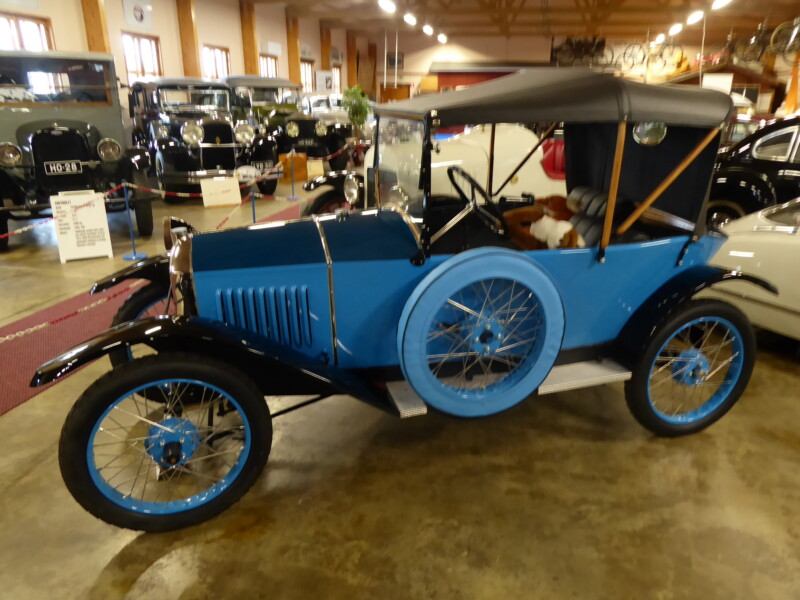
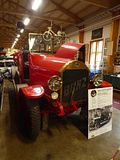
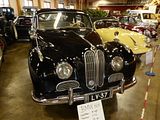
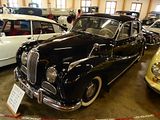
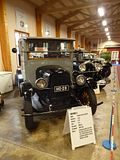
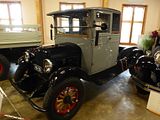
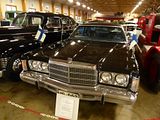
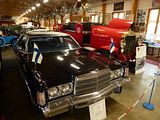

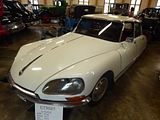
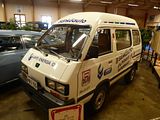
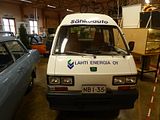

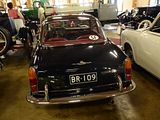
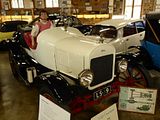
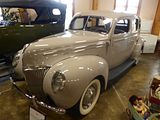

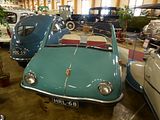
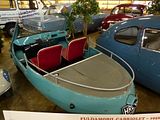
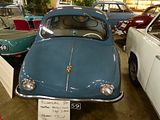

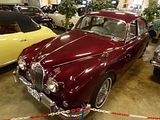
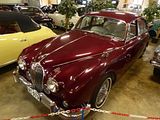
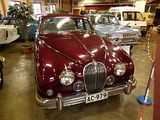
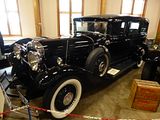
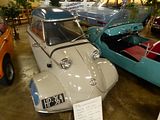
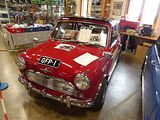
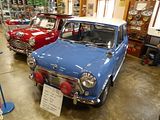
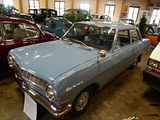
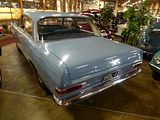

.jpg?width=180&height=120&fit=bounds)

